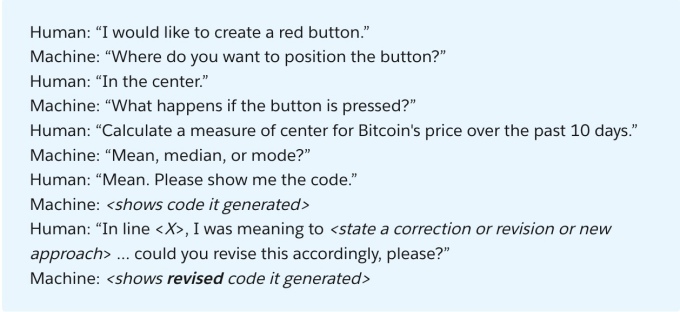As we start to see AI advance in business, the ways in which we interact with machines are beginning to change. Companies like Salesforce are looking for new opportunities for AI to have a more direct impact on customers.
While using AI to surface the customer most likely to churn or most likely to buy is certainly useful, it’s just a step in the process, and it’s only the start of how AI could change how we work in the future.
Salesforce’s AI journey began in 2016 when it launched its AI framework called Einstein. In reality, Einstein was never meant to be a product so much as a set of intelligence capabilities that had the potential to touch every aspect of the Salesforce stack. The original crew that brought that to life has mostly moved on, but the work continues.
The company brought in former Stanford professor Silvio Savarese to be its chief scientist a year ago. One of the reasons he was willing to leave academic life behind was the ability to pursue advanced research with vast datasets, a big staff and the resources of a company like Salesforce.
He said that he wanted to continue to pursue the research he had been doing for the last two decades with the goal of putting skills within reach of people who lacked specific training. “One of the major directions that I’m pushing here is really to bring AI to empower people in business in new ways, and I’m really excited to deliver that power with experiences that are so simple that anyone can use them,” Savarese explained.
To achieve that broad goal, one of the main initiatives he and his 100-person research team have been pursuing is the voice-driven programming approach the company has dubbed CodeGen. The idea is to let people simply describe in plain spoken language what they want to do, and the AI will produce code based on the natural language instructions.
But it’s not simply telling the AI tech what you want; Savarese said it’s more of a conversation. “CodeGen really provides a new way of developing software. Rather than writing code directly, users would simply describe the problem they’re trying to solve in plain English in a conversation. So the conversation part is very, very important,” he explained.
What he means is that you may ask for something and the AI will ask for clarification and there will be a back and forth as in the example provided in a Salesforce blog post explaining CodeGen:

Example of conversational coding from Salesforce using CodeGen tool. Image Credits: Salesforce
While this is very much in the experimental stage of development, they are making progress in building models that would be suitable for two distinct audiences. “The goal is to address a couple of users. One is more experienced developers, which in this case CodeGen will assist them with writing the code and take over those manual portions of the processing, those parts that aren’t that interesting from the coding perspective. The second user is those people with no coding experience, so almost zero expertise in coding, but CodeGen can still give them a way to build software to solve real problems,” he said.
Salesforce is trying to achieve something with conversational coding that hasn’t been done before. While Microsoft is working on something similar with the GPT3 framework, this is what Savarese calls deep learning at scale and it involves extremely complex models.
“This is a foundational model for coding, so CodeGen is built on a massive autoregressive model with 16 billion parameters, which are trained with a very large amount of data,” he said. Here it bifurcates the use cases with samples for the model based on whether the user is experienced or a non-coder.
While the project is still in the proof-of-concept stage, the next step is to release it to the internal developer community at Salesforce, which will happen when Savarese presents his findings to an internal conference later this month.
If the project moves beyond experimental stage, the idea would be to empower data scientists and business analysts using Tableau, the company Salesforce acquired in 2019 for almost $16 billion, to create programs on top of the data and make it more accessible from a business perspective.
Voice-driven coding could be just the first step here as other capabilities like creating content, website layout and other tasks could be similarly reduced to simply describing them. “The inspiration comes from the need for having an easy way to communicate with AI systems, and the ability to use language to create better communication to inform certain processes.”

